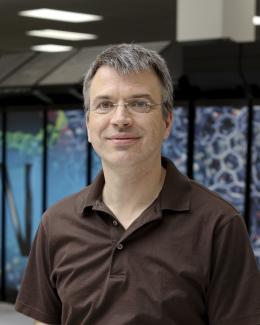The Science
In the stars above, tin turns into a rare and valuable element called indium. This and other transformations occur via beta decay. Recently, a team solved that 50-year-old puzzle to explain why beta decays of atomic nuclei are slower than what’s expected based on the beta decays of free neutrons. To solve the puzzle, the team simulated tin-100 decaying into indium-100, a neighboring element on the Periodic Table by developing novel methods and using tens of millions of CPU hours on the supercomputer Titan.
The Impact
The findings fill a long-standing gap in physicists’ understanding of beta decay. This decay is an important process that impacts nucleosynthesis in core-collapse supernovae and neutron star mergers. Also, the findings emphasize the need to include subtle effects—or more realistic physics—when predicting certain nuclear processes. The achievement gives nuclear physicists increased confidence as they search for answers to some of the most perplexing mysteries related to the formation of matter in the universe. Those mysteries include neutrinoless double beta decay, which could change our view of the universe.
Funding
This research was supported by the Department of Energy Office of Science Nuclear Physics and Advanced Scientific Computing Research. Calculations were performed using the Oak Ridge Leadership Computing Facility’s Titan supercomputer. Additional support was provided by Lawrence Livermore National Laboratory, the National Research Council of Canada, and the Laboratory Directed Research and Development effort at Oak Ridge National Laboratory.
Related Links
Oak Ridge National Laboratory highlight: ORNL-led collaboration solves a beta-decay puzzle with advanced nuclear models





